Welcome to animals that start with H. Animals that begin with the letter H are pretty fascinating. I can guarantee you will discover something new on this list. Enjoy our list of animals that start with H!
Overview of Animals that Start with H
1. Hagfish
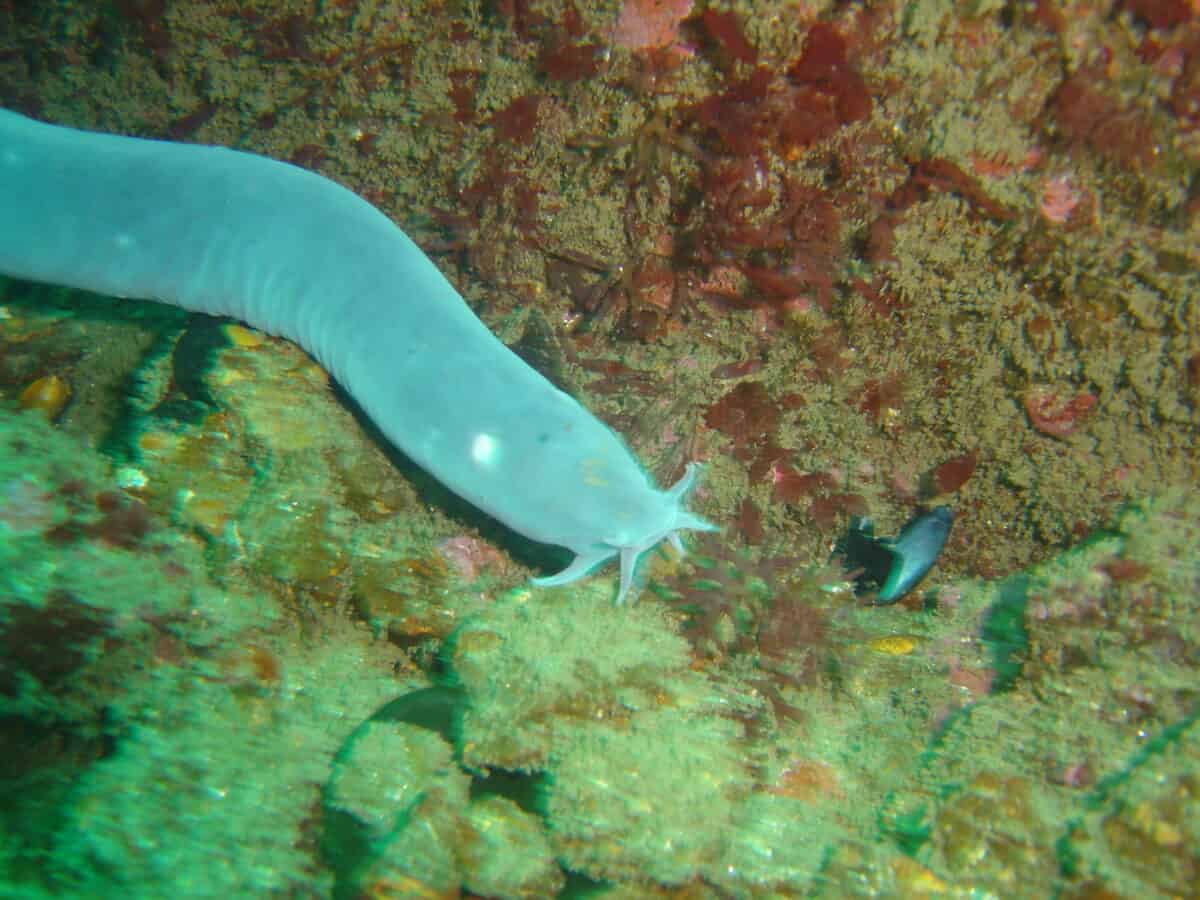
| Scientific Name | Myxini |
| Where it Lives | Deep ocean waters worldwide, often found on the ocean floor |
| What it Eats | Carrion, small invertebrates |
| Conservation Status | Least Concern |
Fun Fact: They possess a skull but no spinal column.
Hagfish are incredibly unique animals. Its slimy body can be pinkish-gray, blue, or purple. It is an eel-like animal that has no jaw.
Hagfishes possess glands on their bodies that produce thick, sticky slime to escape predators. They absorb nutrients through their skin and have three hearts.
2. Hammerhead Shark
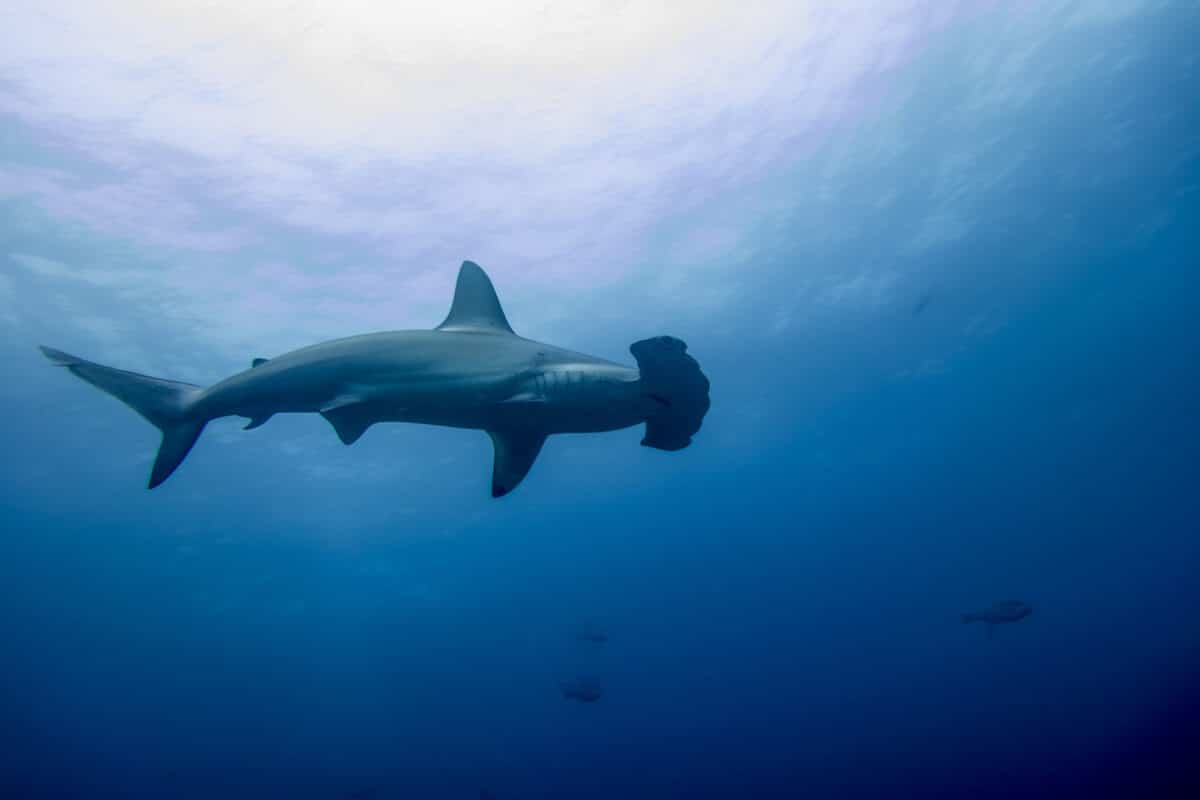
| Scientific Name | Sphyrnidae |
| Where it Lives | Various oceans around the world, primarily in warm coastal waters |
| What it Eats | Fish, squid, octopus, crustaceans |
| Conservation Status | Vulnerable |
Fun Fact: The Hammerhead Shark has an almost 360-degree view with a blind spot in front of its nose.
Hammerhead Sharks are best known for their long, rectangular heads. Their unique heads give them an advantage when hunting as they can ram into prey.
Hammerhead Sharks love warm, coastal waters. Their size can range from 0.9 meters to 6.1 meters.
3. Hamster

| Scientific Name | Cricetinae |
| Where it Lives | Various habitats, including deserts, forests, and grasslands |
| What it Eats | Seeds, fruits, vegetables, insects |
| Conservation Status | Least Concern |
Fun Fact: Female Hamsters put their young in the pouches in their mouths when they sense danger.
Hamsters are small rodents with stout bodies, stubby legs, and wide feet. They are gentle and popular house pets.
Hamsters can bite, but only when their sleep is disturbed. They have many predators, but they are quick and can escape sometimes.
4. Hare

| Scientific Name | Lepus |
| Where it Lives | Various habitats including grasslands, woodlands, and meadows |
| What it Eats | Grasses, herbs, twigs, buds, and bark |
| Conservation Status | Least Concern |
Fun Fact: Hares’ teeth keep growing, so they have to grind it down by eating grass constantly.
Hares are small, furry animals with long ears, long hind legs, big eyes, and stout bodies. They are similar to rabbits, but they live above the ground, unlike rabbits.
Hares can leap 10 feet into the air, are capable of short bursts of speed between 40 mph and 50 mph, and consistent speed of 30 mph.
5. Harpy Eagle
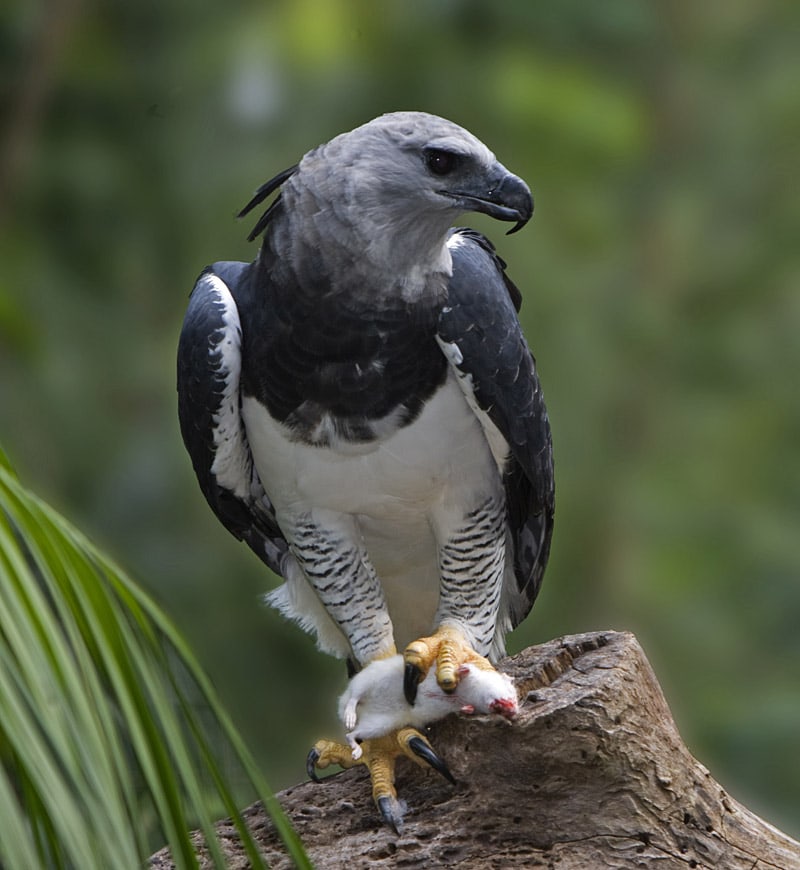
| Scientific Name | Harpia harpyja |
| Where it Lives | Tropical rainforests of Central and South America |
| What it Eats | Primarily monkeys, sloths, and other small mammals; also birds and reptiles |
| Conservation Status | Near Threatened |
Fun Fact: The Harpy Eagle’s talons are about the same size as a Grizzly Bear’s claws.
Harpy Eagles are one of the largest eagle species. Their most distinctive features are the crown of feathers at the top of their heads and yellow feet.
They have extraordinary visual senses and can spot prey hundreds of feet away. They also have a wingspan of 6.5 feet.
6. Hedgehog
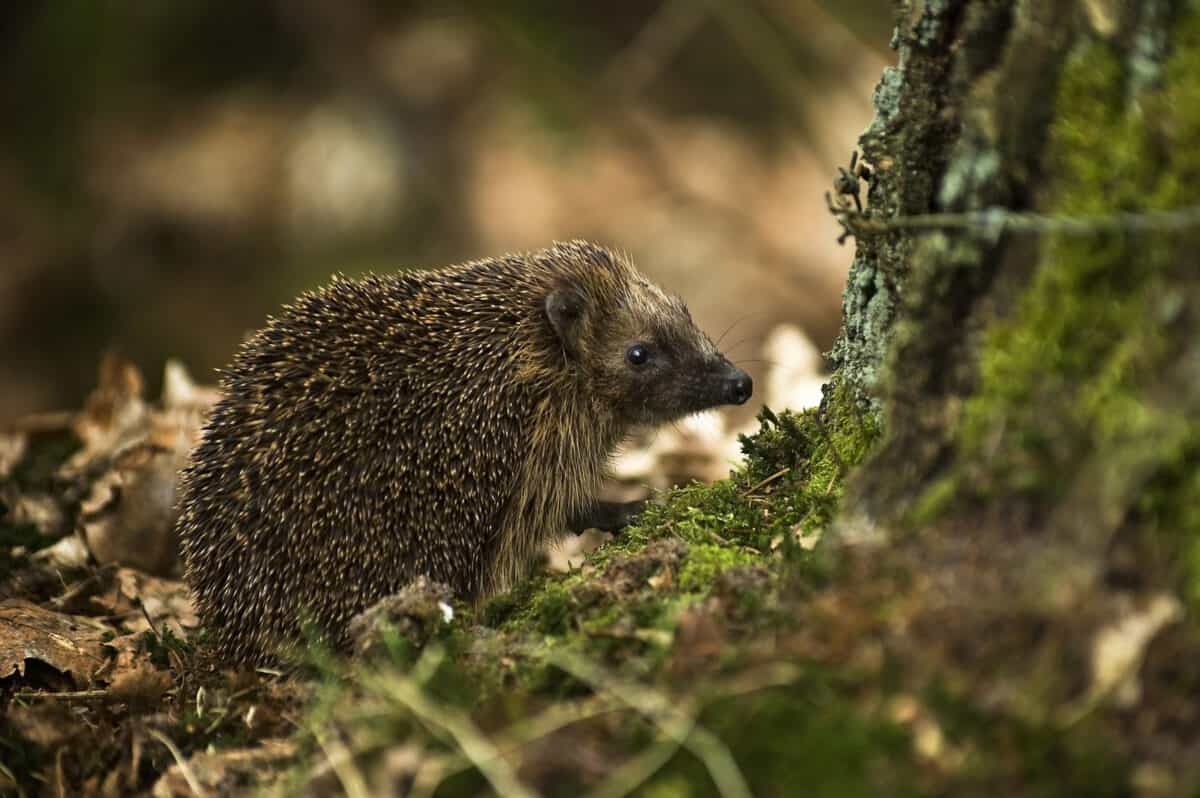
| Scientific Name | Erinaceus |
| Where it Lives | Europe, Asia, Africa |
| What it Eats | Insects, worms, snails, fruits, and vegetation |
| Conservation Status | Least Concern |
Fun Fact: Owning a hedgehog is illegal in many states.
Hedgehogs are known for the stiff and sharp spines on their coat. When they feel endangered, they roll up into a ball with the spines pointing outwards as a defense.
Hedgehogs eat some garden pests, making them good pets.
7. Hercules Beetle
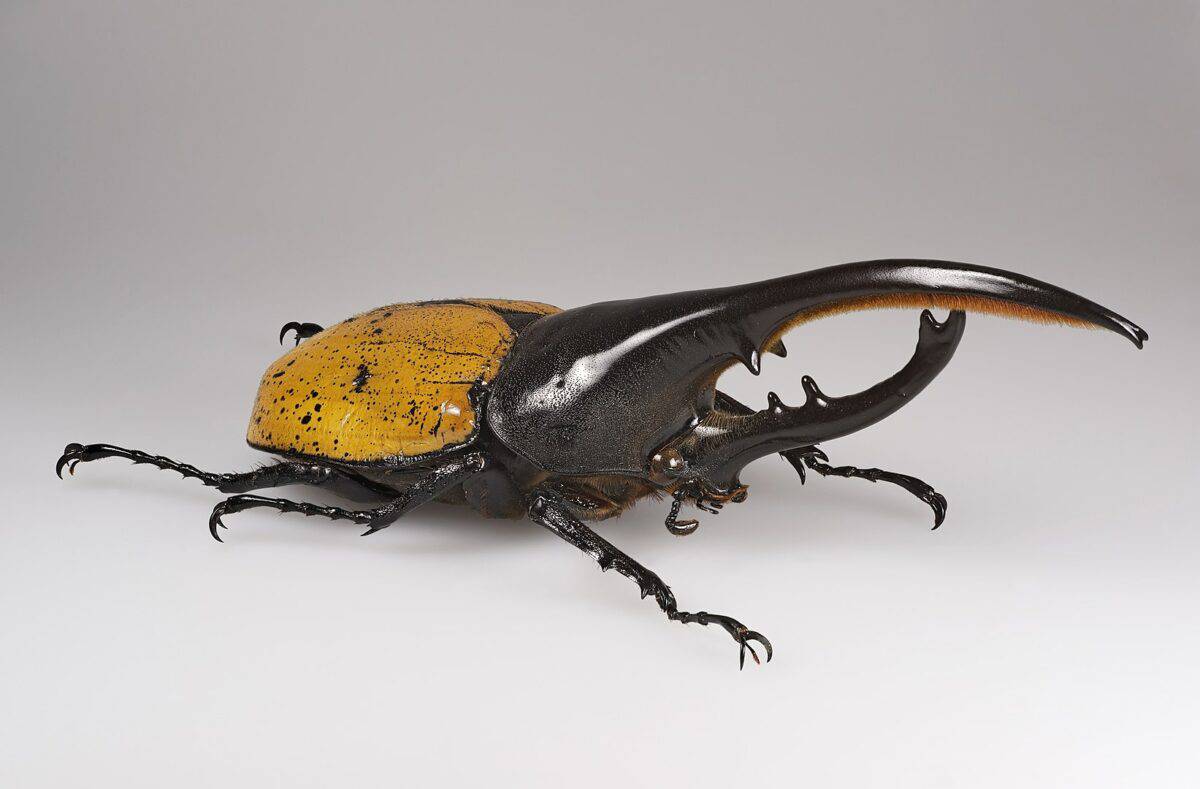
| Scientific Name | Dynastes hercules |
| Where it Lives | Tropical rainforests of Central and South America |
| What it Eats | Fruits, nectar, and plant sap; larvae feed on decaying wood |
| Conservation Status | Least Concern |
Fun Fact: Hercules Beetles make a huffing sound when disturbed.
Hercules Beetles can be identified by their hard, armored shell and horn-like pincers. They can fly and are one of the largest flying insects.
Only males have horns, and they use them to fight. The Beetles spend most of their lives in larvae form, about two years.
8. Heron
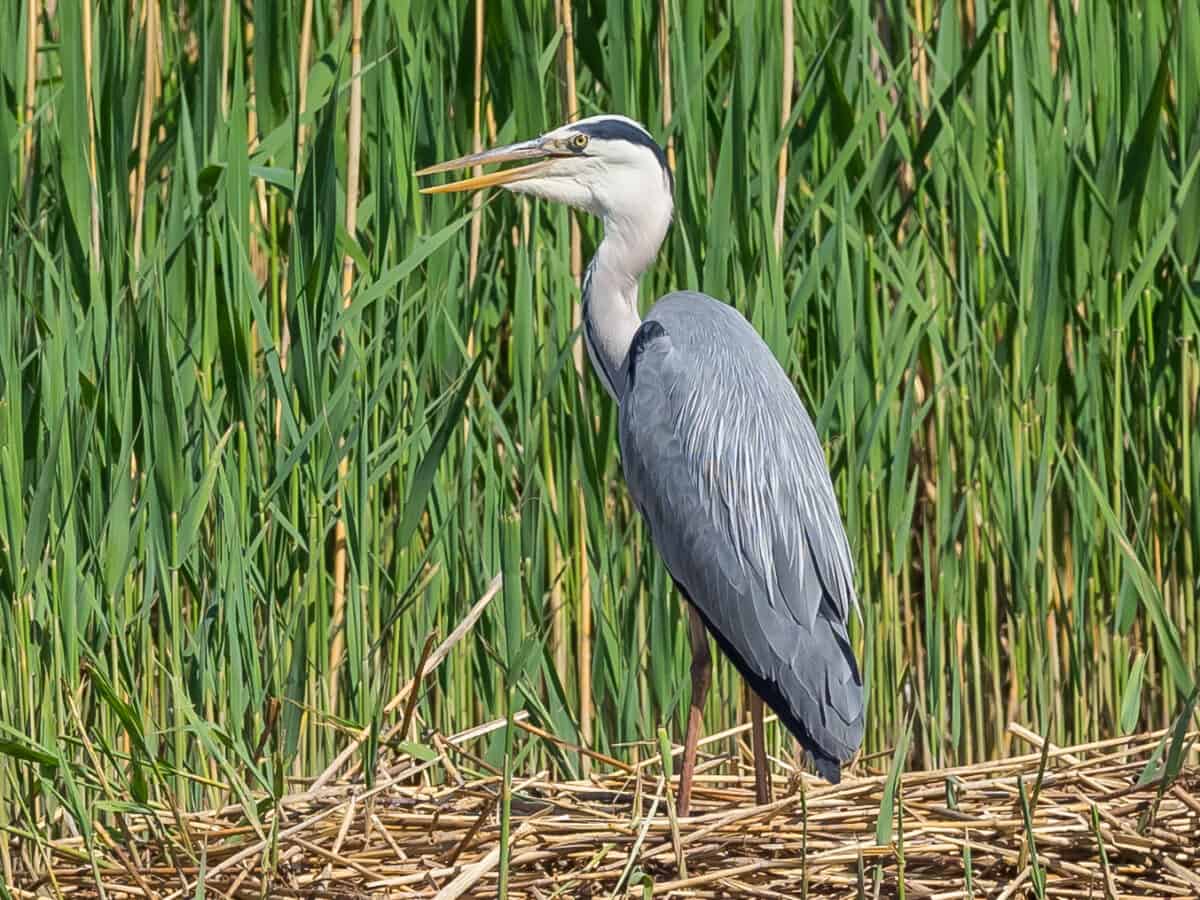
| Scientific Name | Ardeidae |
| Where it Lives | Various habitats including wetlands, marshes, rivers, lakes, and coastal areas |
| What it Eats | Fish, amphibians, reptiles, insects, and small mammals |
| Conservation Status | Least Concern |
Fun Fact: Herons fly with their feet dangling down. Few birds fly like this.
Herons inhabit wetlands around the world. They are long-legged birds with a sharp beak and S-shaped necks.
The largest species, called the Goliath Heron, can grow as tall as 5 feet.
9. Hippopotamus
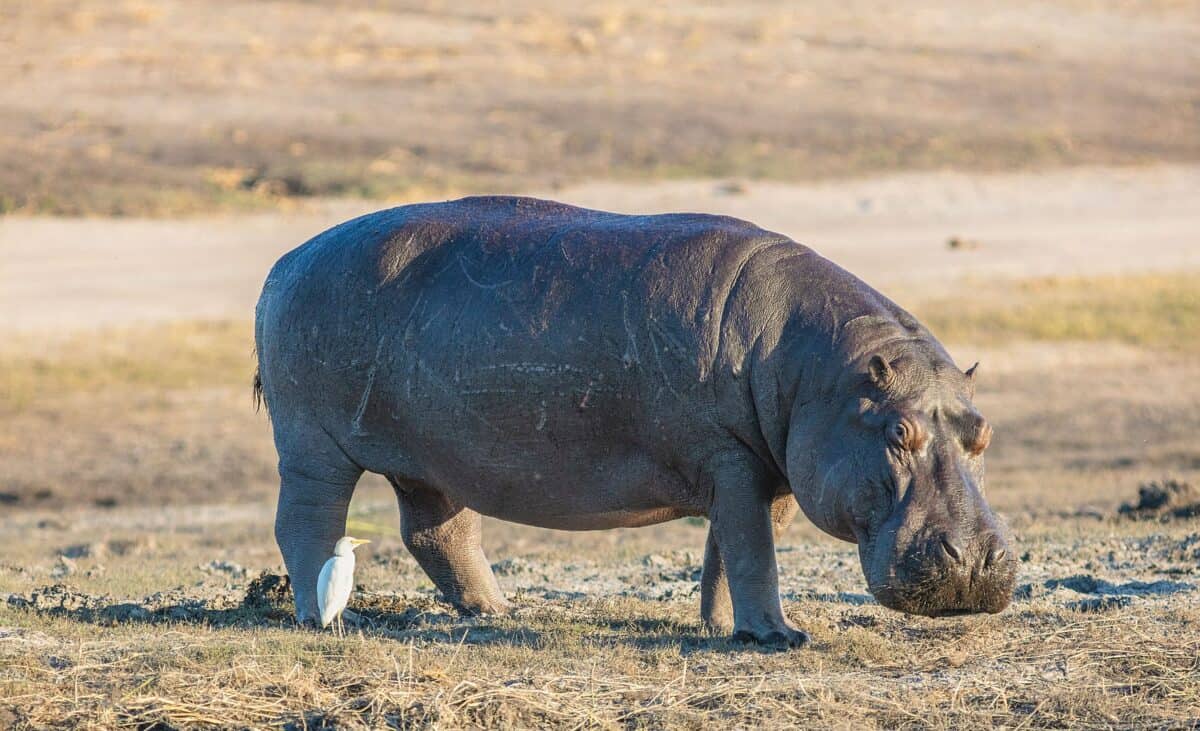
| Scientific Name | Hippopotamus amphibius |
| Where it Lives | Sub-Saharan Africa, near rivers, lakes, and mangrove swamps |
| What it Eats | Mostly grass, but also aquatic plants |
| Conservation Status | Vulnerable |
Fun Fact: Hippos secrete an oily, pink ‘sweat’ that is antibacterial.
Hippos are large, barrel-shaped, semi-aquatic mammals found in Africa. Their eyes, noses, and ears are located at the top of their heads.
They have enormous jaws lined with sharp teeth, but they are herbivores. Despite being large and having short, stocky legs, Hippos can run as fast as 30 mph.
10. Honduran White Bat
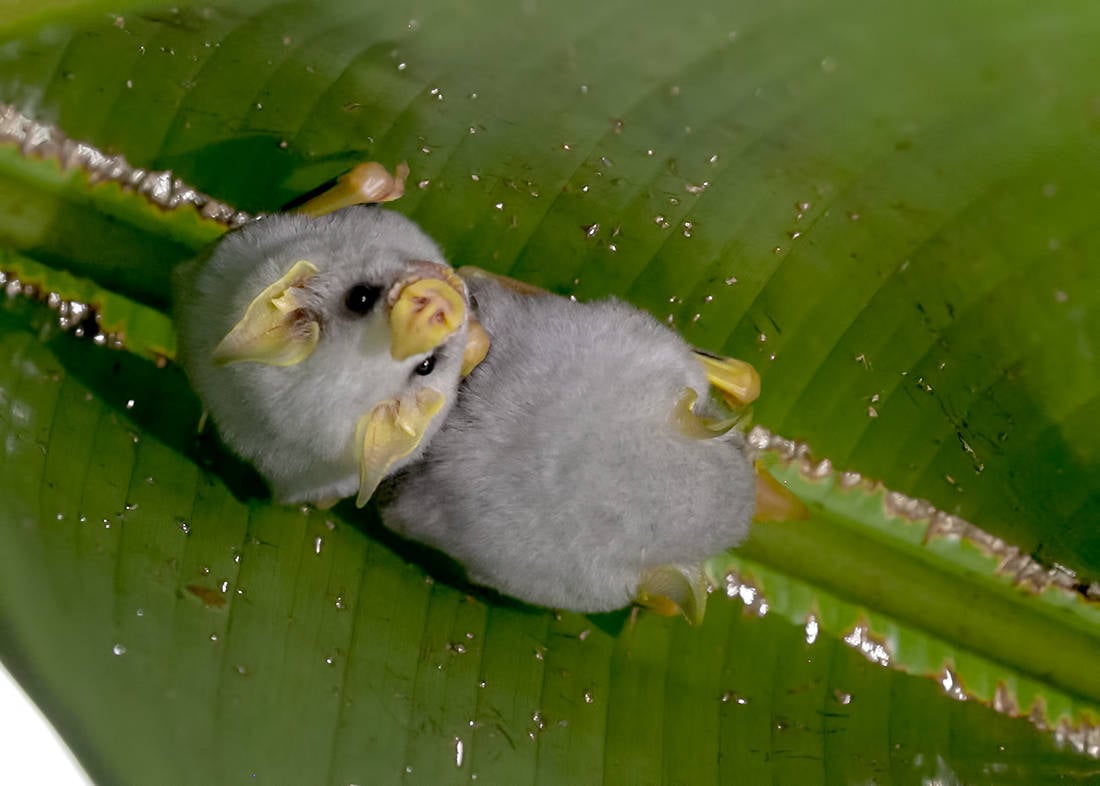
| Scientific Name | Ectophylla alba |
| Where it Lives | Rainforests of Central America, particularly Honduras, Nicaragua, Costa Rica, and Panama |
| What it Eats | Fruits, particularly figs |
| Conservation Status | Least Concern |
Fun Fact: The Honduran white bat only eats the fruits of one type of fig tree.
Honduran White Bats can be identified by their white fur and leaf-shaped nose. Its nose, lips, and ears are orange in color.
The bat is also known for building ‘tents’ to rest in with leaves. One male and several females inhabit this tent. He mates with all the females and goes on to his bachelor colony.
11. Honey Badger
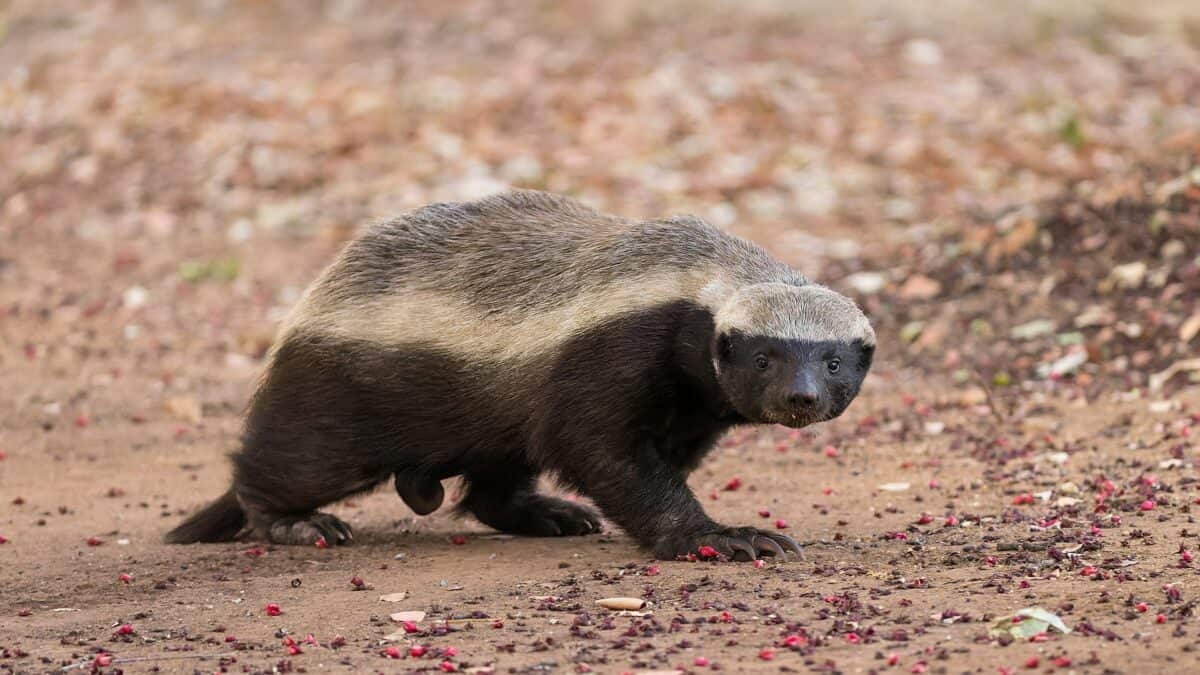
| Scientific Name | Mellivora capensis |
| Where it Lives | Sub-Saharan Africa |
| What it Eats | Omnivorous; diet includes insects, small mammals, birds, reptiles, fruits, and roots |
| Conservation Status | Least Concern |
Fun Fact: Honey Badgers are naturally immune to snake venom!
Honey Badgers sometimes resemble overgrown skunks. It has a long body, flat head, and long claws. Its tough skin can withstand all manner of injuries, including machete cuts, arrow piercings, and bee stings.
Honey Badgers are fearless, and aggressive, and attack anything, including humans, when cornered. Like skunks, they also release a foul odor to repel predators.
12. Honey Buzzard
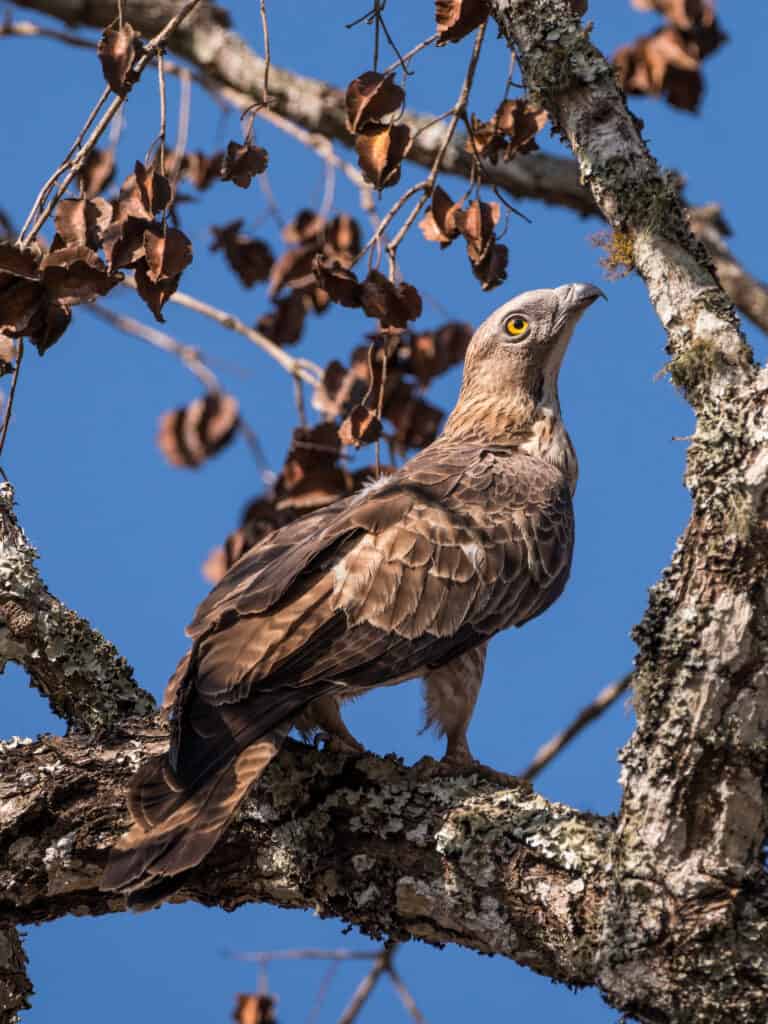
| Scientific Name | Pernis apivorus |
| Where it Lives | Woodlands, forests, and open countryside across Europe, Asia, and Africa |
| What it Eats | Primarily feeds on the larvae of wasps and bees, also eats other insects, small mammals, and reptiles |
| Conservation Status | Least Concern |
Fun Fact: Honey Buzzards are not kept in American zoos but can be found in European zoos.
Honey Buzzards are medium-sized raptors. Contrary to its name, it has nothing to do with honey. Instead, it’s the larvae of bees and wasps that it feeds on.
Its long, curved bill is specially adapted for catching and holding insects. On occasion, it feeds on small birds and frogs.
13. Horn Shark
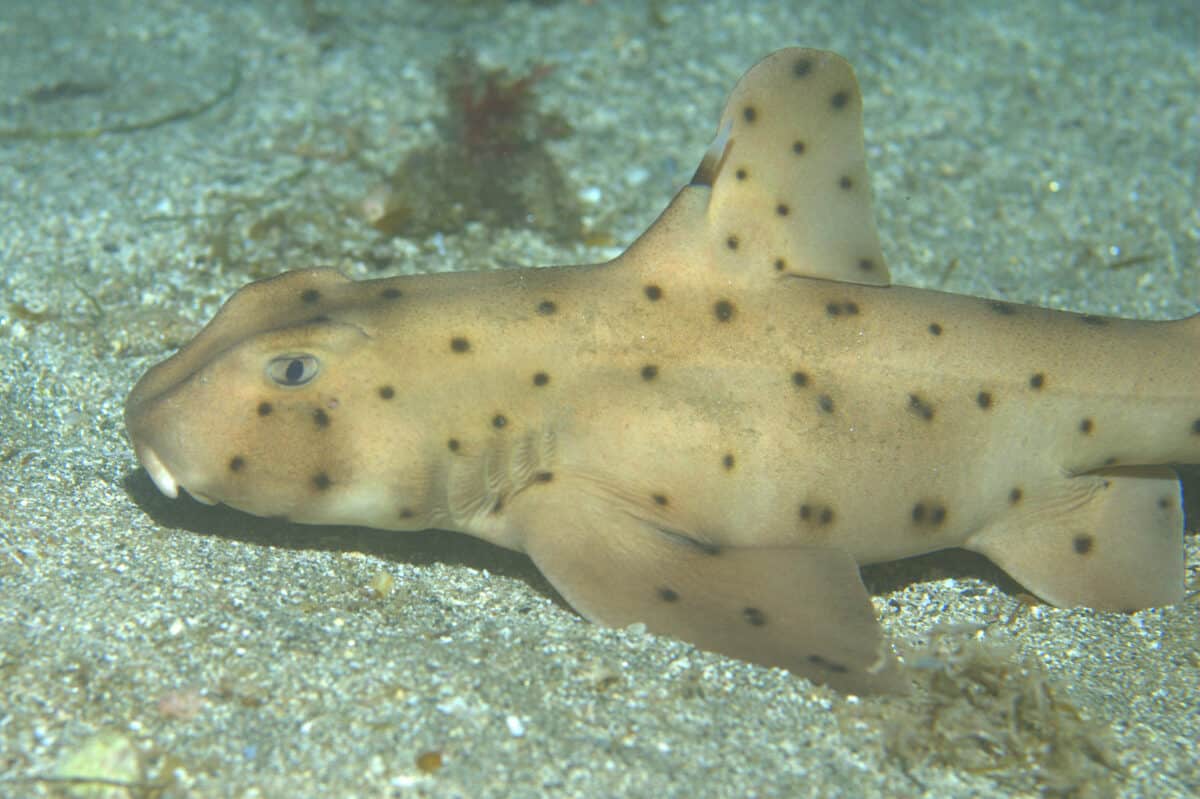
| Scientific Name | Heterodontus francisci |
| Where it Lives | Eastern Pacific Ocean, ranging from southern California to the Gulf of California |
| What it Eats | Bottom-dwelling fish, crustaceans, mollusks, and small invertebrates |
| Conservation Status | Near Threatened |
Fun Fact: Horn Sharks can live up to 50 years in the wild.
Horn Sharks can be identified by their blunt heads, curved snouts, and sharp spines. They also possess ridges above both eyes that resemble horns.
Horn Sharks feed by sucking up prey into their mouths. They also lay eggs.
14. Hornbill
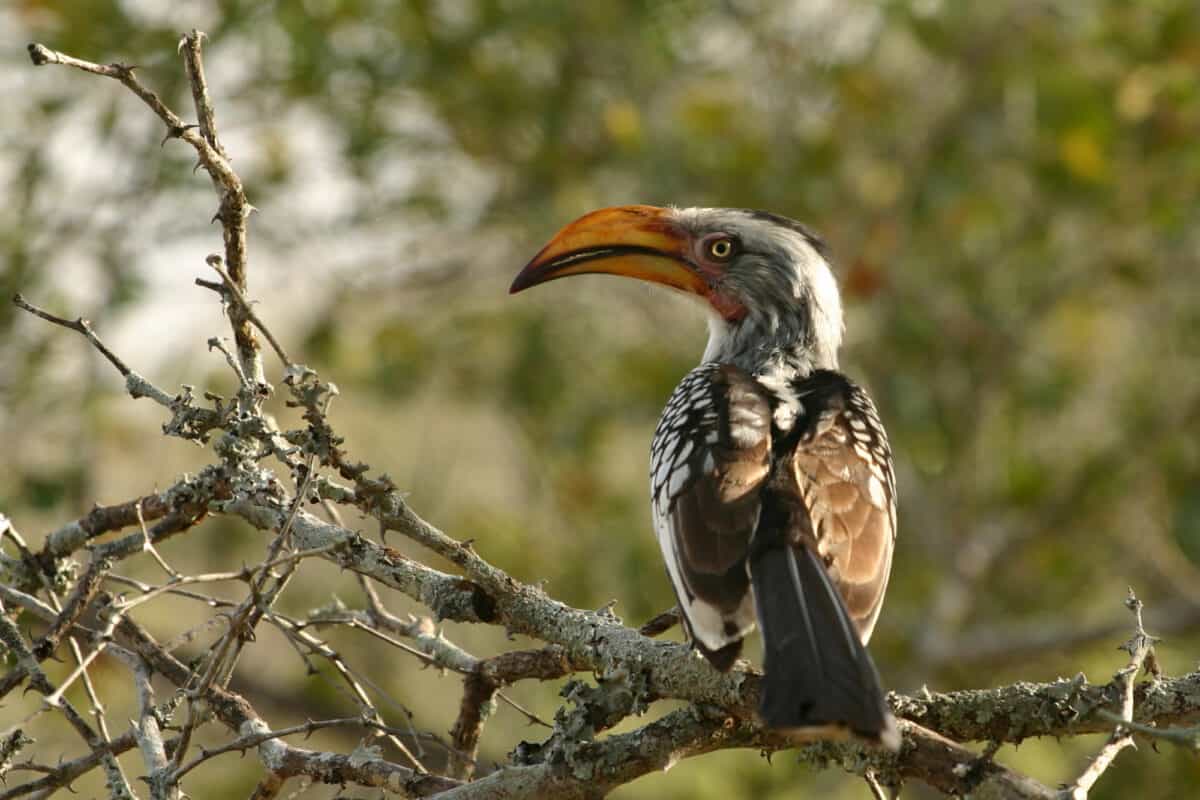
| Scientific Name | Bucerotidae (family), various species |
| Where it Lives | Tropical and subtropical regions of Africa, Asia, and Melanesia |
| What it Eats | Omnivorous, diet includes fruits, insects, small mammals, and birds |
| Conservation Status | Varies by species |
Fun Fact: Hornbills can ‘dye’ their bills themselves by rubbing them against a gland under their tails.
Hornbills are brightly colored birds with long-curved bills, and sometimes, a horn on said bill. It also has prominent eyelashes and a long tail.
It is believed that the horn is a hollow chamber used to amplify sound.
15. Horned Frog
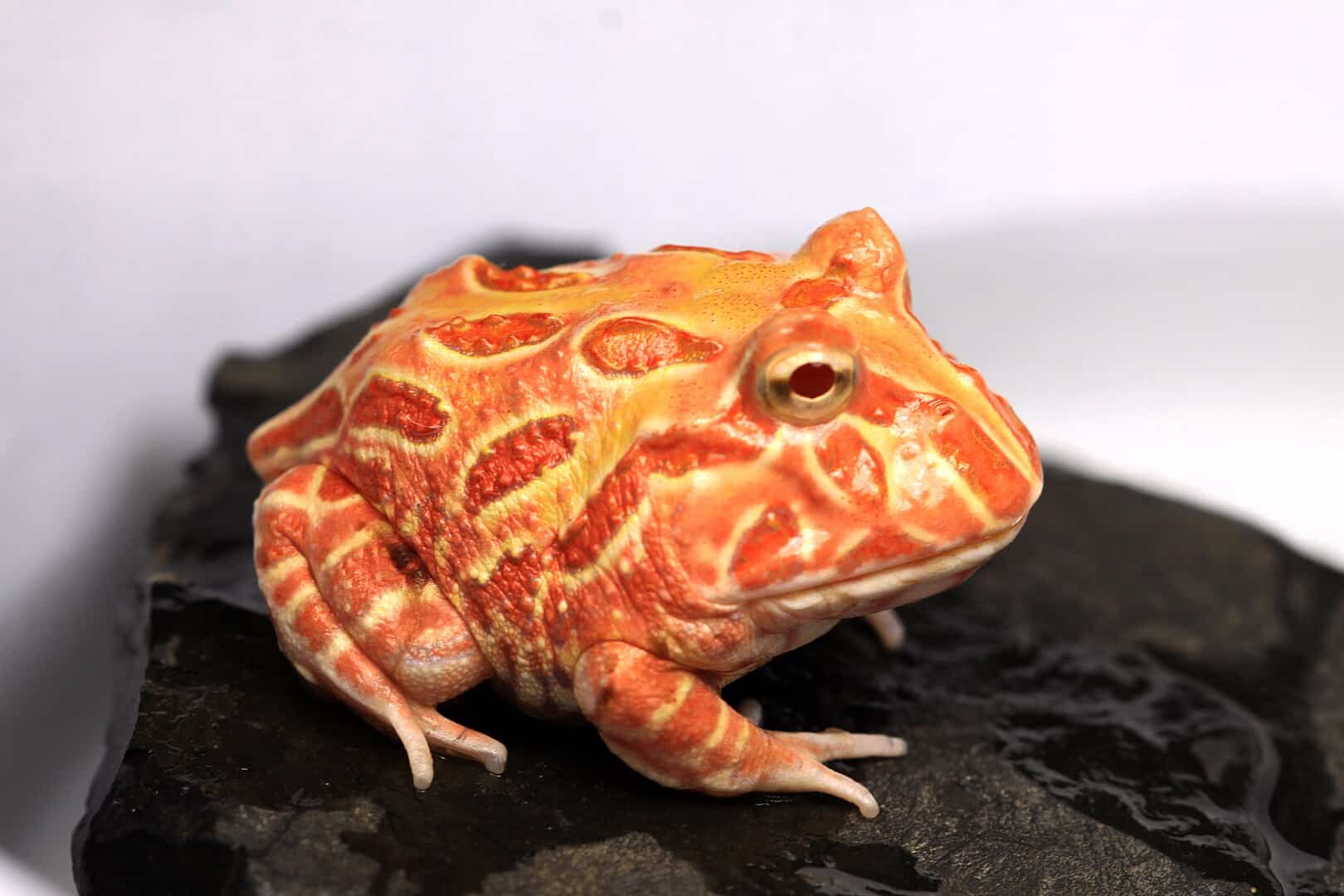
| Scientific Name | Ceratophrys (genus) |
| Where it Lives | South America, primarily in tropical and subtropical regions |
| What it Eats | Insects, small mammals, reptiles, and other amphibians |
| Conservation Status | Varies by species, some are of least concern while others are near threatened |
Fun Fact: Horned frogs are popular in the exotic pet trade.
Horned frogs have pointy eyelids, giving them the appearance of having “horny” eyes. These eyelids resemble leaves, which helps the frog camouflage on the forest floor
This frog is aggressive and has a wide mouth to catch prey of its size. It would even attack animals bigger than itself.
16. Horned Viper
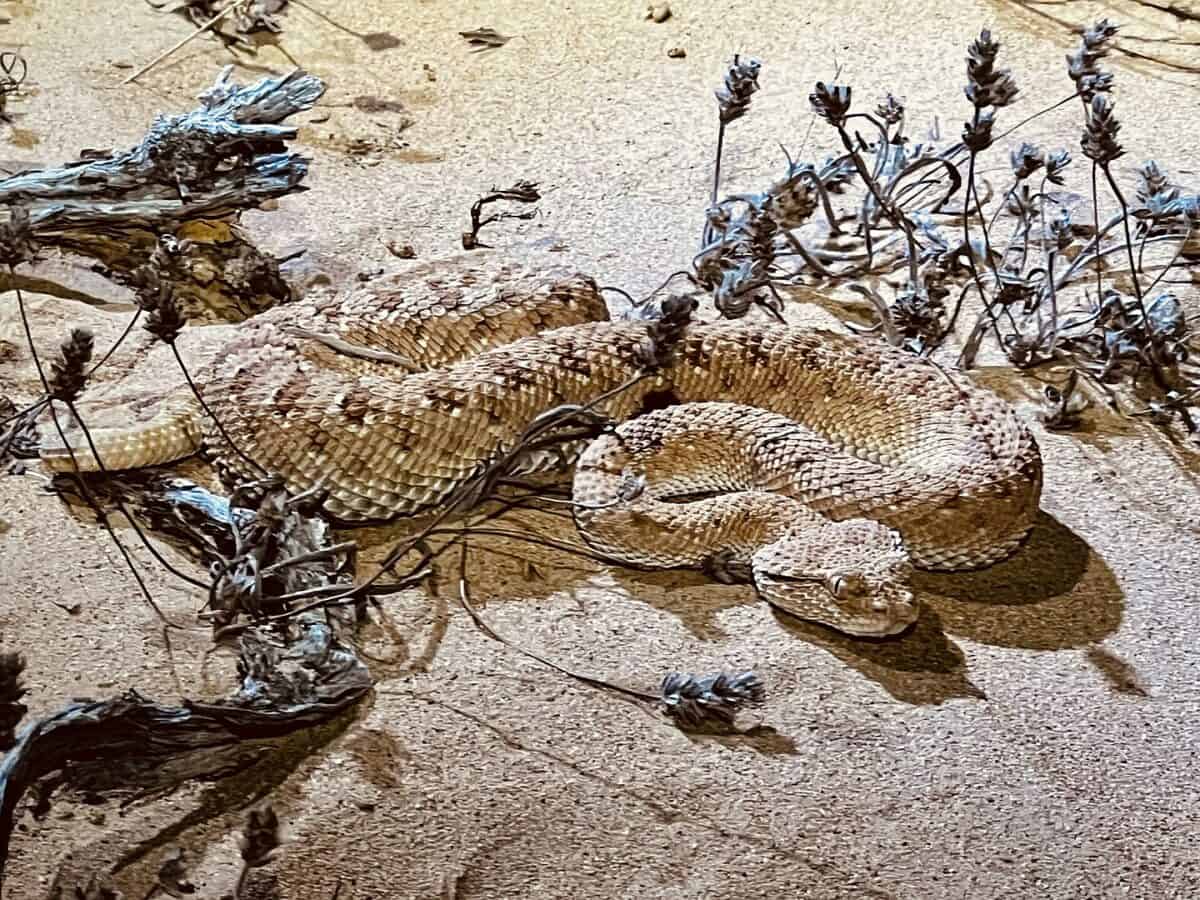
| Scientific Name | Horned Viper |
| Where it Lives | Various arid and semi-arid regions across Africa and the Middle East |
| What it Eats | Primarily small mammals, birds, and reptiles |
| Conservation Status | Varies by species, some are of least concern while others are near threatened |
Fun Fact: It is theorized that Cleopatra used this snake to end her life.
Horned Vipers reside in the desert and rocky areas. It has scales above its eyes and nose to protect it from the sand.
It is venomous and travels in a sideways manner.
17. Horseshoe Crab
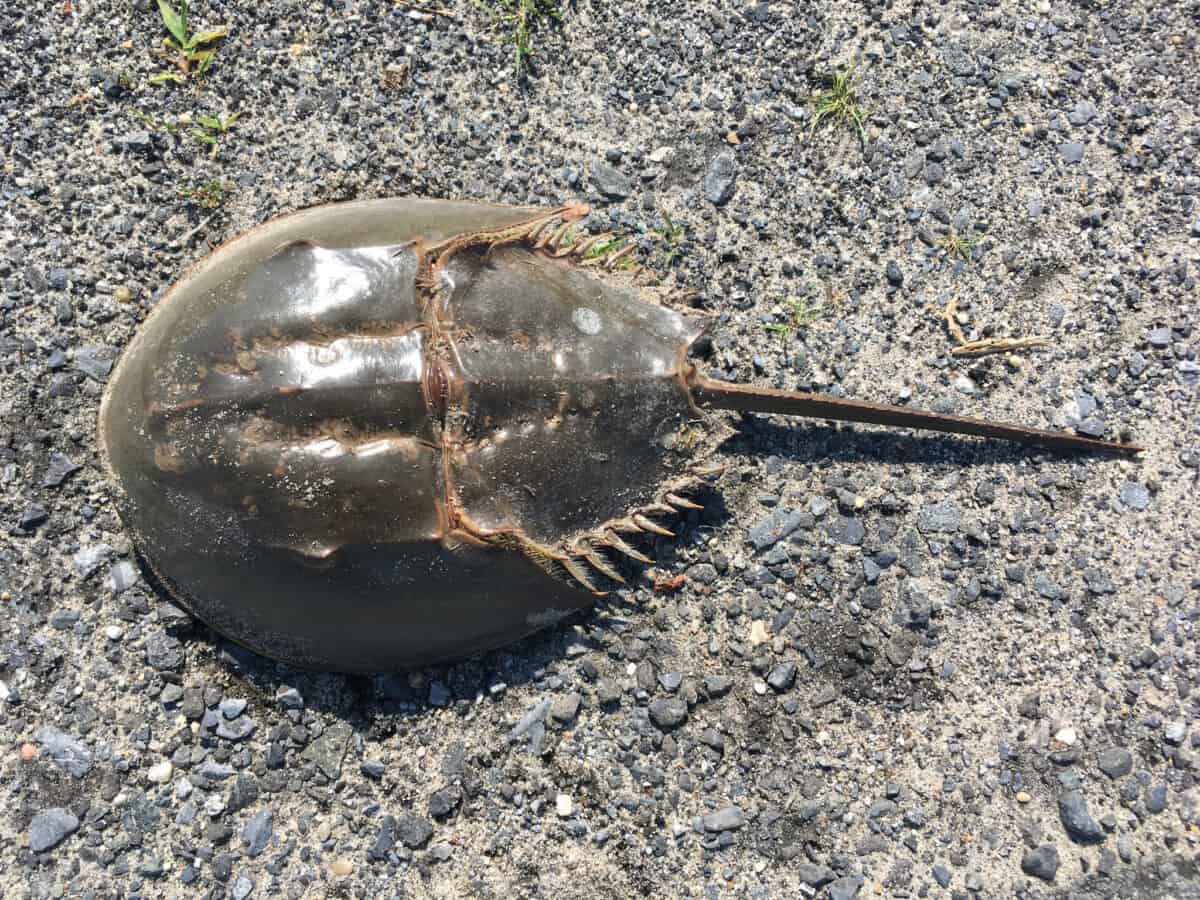
| Scientific Name | Limulus polyphemus |
| Where it Lives | Coastal waters of North America, Southeast Asia, and the Indian Ocean |
| What it Eats | Small fish, mollusks, worms, and algae |
| Conservation Status | Vulnerable |
Fun Fact: Horseshoe Crabs are older than Dinosaurs!
Horseshoe Crabs, Contrary to their name, are, in fact, not crabs. It is related to spiders and can be identified by its horseshoe-shaped shell and long, stiff tail.
It has many eyes. There are eyes under its head and even its tail.
18. Humboldt Squid

| Scientific Name | Dosidicus gigas |
| Where it Lives | Eastern Pacific Ocean, particularly off the coast of South America |
| What it Eats | Fish, crustaceans, and other squid species |
| Conservation Status | Data Deficient |
Fun Fact: Humboldt Squids change color to communicate.
Humboldt Squids are large cephalopods that possess cone-shaped mantles with two spring-like fins at the sides.
They have ten tentacles with 100 to 200 suckers each.
19. Humpback Whale
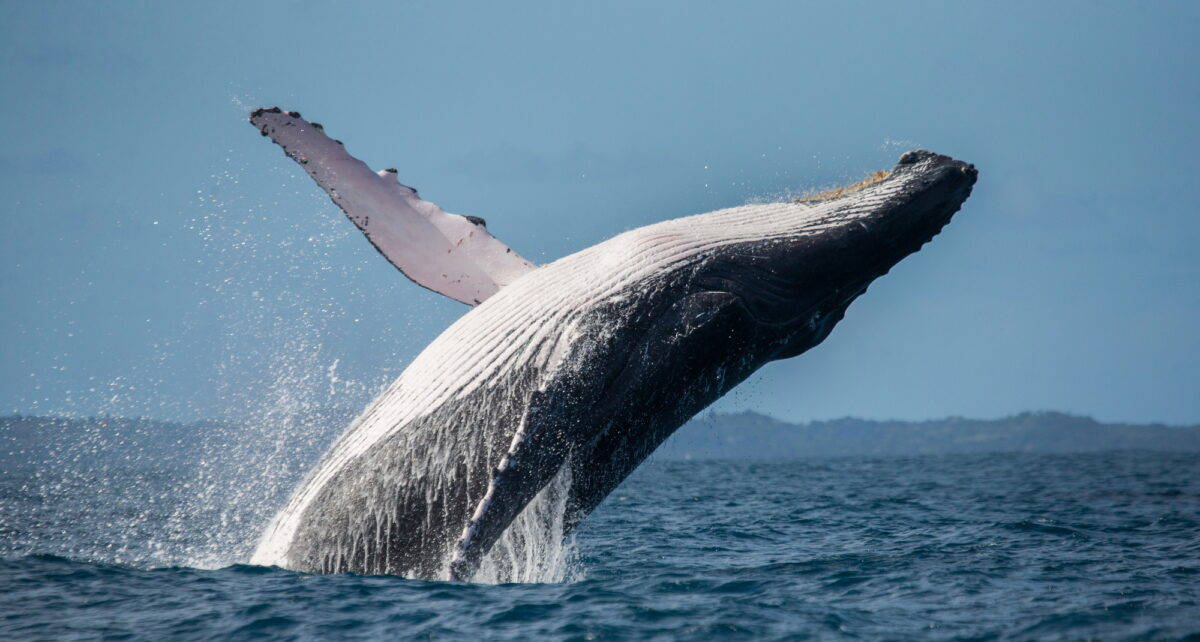
| Scientific Name | Megaptera novaeangliae |
| Where it Lives | Oceans worldwide, migrate between polar feeding grounds and tropical breeding grounds |
| What it Eats | Mostly small fish, krill, and plankton |
| Conservation Status | Least Concern |
Fun Fact: Humpback Whales do not have teeth. Instead, they have baleen plates made of keratin.
Humpback Whales received their names because of a hump near their dorsal fin and hair follicles on their head and jaw. It tends to live near the shores of oceans.
The albino humpback whale is extremely rare and is offered extra protection.
20. Huntsman Spider

| Scientific Name | Sparassidae spp. |
| Where it Lives | Found in various habitats worldwide, often in tropical and subtropical regions |
| What it Eats | Insects, other spiders, small vertebrates |
| Conservation Status | Not assessed |
Fun Fact: Huntsman Spiders don’t produce webs but spin a cocoon out of silk.
Huntsman spiders are giant, venomous, and hairy spiders that hold their legs like crabs. It perches on flowers and ambushes insects on them.
Some people welcome it into their homes to help deal with cockroaches.
Summary of Animals That Start with H
This was such a great list to put together. We hope you enjoyed it as much as we did. Here is another animal list that starts with Z. We’ll see you next time. Thank you for reading about animals that start with H!
If you like to see more Alphabetical Animal Letters check out our full list:
- Animals That Start With A
- Animals That Start With B
- Animals That Start With C
- Animals That Start With D
- Animals That Start With E
- Animals That Start With F
- Animals That Start With G
- Animals That Start With I
- Animals That Start With J
- Animals That Start With K
- Animals That Start With L
- Animals That Start With M
- Animals That Start With N
- Animals That Start With O
- Animals That Start With P
- Animals That Start With Q
- Animals That Start With R
- Animals That Start With S
- Animals That Start With T
- Animals That Start With U
- Animals That Start With V
- Animals That Start With W
- Animals That Start With X
- Animals That Start With Y
- Animals That Start With Z
Thank you for reading!
Join our Forum for free today!

- These are The 5 Largest Great White Sharks Ever Recorded - July 19, 2024
- The Surprising Benefits of Big Game Hunting - July 18, 2024
- $100k+ Hunting Experiences The Most Expensive Animals to Pursue - July 17, 2024


